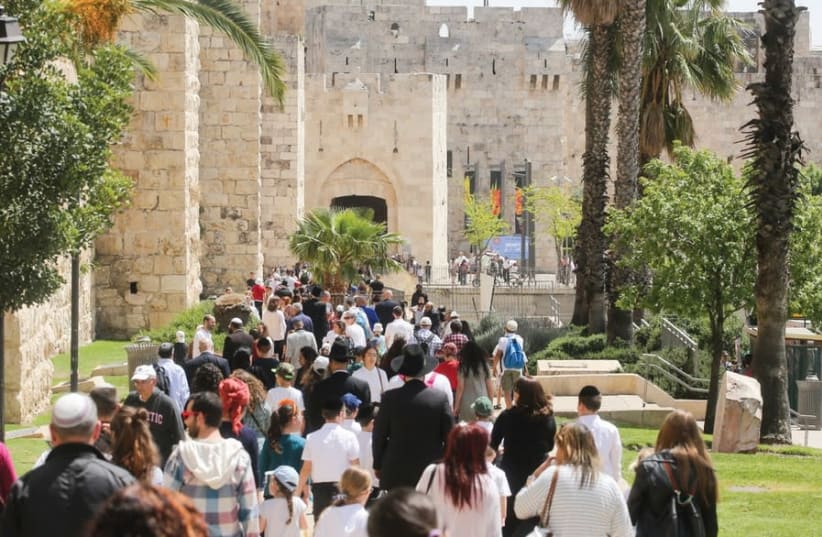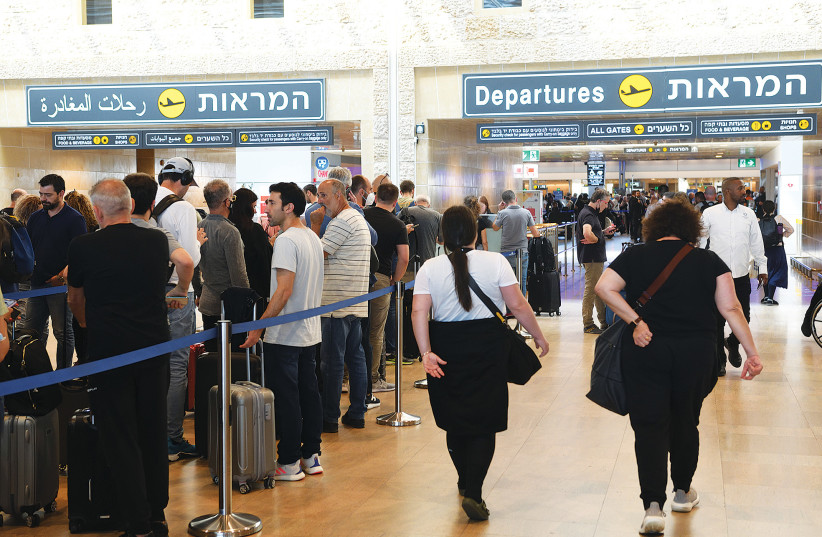The ongoing war in Gaza and fears of an impending Israeli military invasion in Rafah continue to impact tourism in Israel and Palestine, with no end in sight to the slump.
The Israeli Central Bureau of Statistics reported a rise in tourist entries to 79,500 in March 2024 from 68,100 in February, though this was significantly lower than the 375,600 entries in March 2023. From January to March 2024, visitor entries totaled 206,700, a steep decline from the 966,200 tourists during the same period in 2023.
Following the October 7 Hamas attack, international airlines ceased flights to Israel due to security concerns. Since the war began, tourist entries into Israel dropped dramatically, with only 180,000 arriving in the last quarter of 2023 versus an expected 900,000.
According to the Central Bureau of Statistics, 415,300 Israelis traveled abroad in March 2024, up from 343,800 in February but still below the 746,300 who traveled in March 2023.
Tourism is yet to return to normal
Although some foreign airlines have resumed flights, tourism in Israel is gradually recovering but has not returned to normal.
The Palestinian Ministry of Tourism and Antiquities reported that visitor numbers in the West Bank and East Jerusalem reached 2.5 million from January to the beginning of October 2023—around 278,000 visitors per month; since then, they have plummeted to less than 1% of this figure. The ongoing war is causing Palestinian cities to lose about $2.5 million daily, with 60% of these losses affecting Bethlehem.
Specifically in Bethlehem, 90 antique stores and 450 crafts operators have suffered significant losses, leading to closures. The crisis has also deeply impacted the city’s tour guides, photographers, pottery workshops, and street vendors, leaving most jobless.
“We used to have 35,000 employees in the tourist industry in Palestine, but so far, less than 3% are working,” Majed Ishaq, director general of marketing at the Palestinian Ministry of Tourism and Antiquities, told The Media Line.
“We have few religious tourists, mostly Christians, in the cities of Jericho, Nazareth, and Bethlehem, but most of them come through Jordan since many flights from abroad do not fly to Tel Aviv,” he added.
Ishaq also noted that a major challenge is the omission of the Holy Land from the International Tour Operators Catalogue, as it is now deemed an unsafe travel destination. Meanwhile, neighboring countries like Jordan, Egypt, and even Syria are attracting more tourists, perceived as safer than Israel and Palestine.
“Some of our tour operators from East Jerusalem can move freely within Israel and the Palestinian Territories, while others, mainly from the West Bank, require a permit to work in Israel,” Ishaq explained. “Due to the war, many have not managed to renew their permits, making it almost impossible to obtain Israeli authorization in time,” he added.
Unlike Israel, which benefits from domestic tourism, travel is very difficult for Palestinians. It may take hours to pass through Israeli checkpoints, making travel between the Palestinian territories and Israel unbearable for a one-day visit, Ishaq stated. He also mentioned that the Palestinian Tourism Ministry is struggling financially due to the economic crisis in the West Bank and Gaza and the loss of income from Palestinians who previously worked in Israel.
In contrast, government subsidies in Israel are helping to keep parts of the industry afloat. “Our ministry is financially assisting those affected by the tourism downturn, paying 80% of salaries for those employed in travel agencies. We also provide marketing support,” Peleg Lewi, the international affairs adviser for the Israeli minister of tourism, told The Media Line.
However, complications persist. “The situation for freelance guides is particularly complicated since they do not receive a salary. The ministry has tried employing them in schools, but this has not been very successful so far,” Lewi added.
Lewi pointed out that domestic tourism, including visits from faith-related groups and discounted accommodations for those relocated from northern Israel, is helping the country withstand a crisis worse than COVID. However, the industry is concerned about potential military escalation between Israel and Hezbollah in the north.
“Despite this crisis, we foresee not only religious tourism but also support from international activists and Muslims boosting our economy,” Ishaq asserted.
On the other hand, Lewi speculated that “while overall foreign tourism in Israel may remain stable, Israelis’ travel abroad will change. Many are likely to choose destinations where they feel safer, and it’s probable that Western Europe won’t be among these.”

